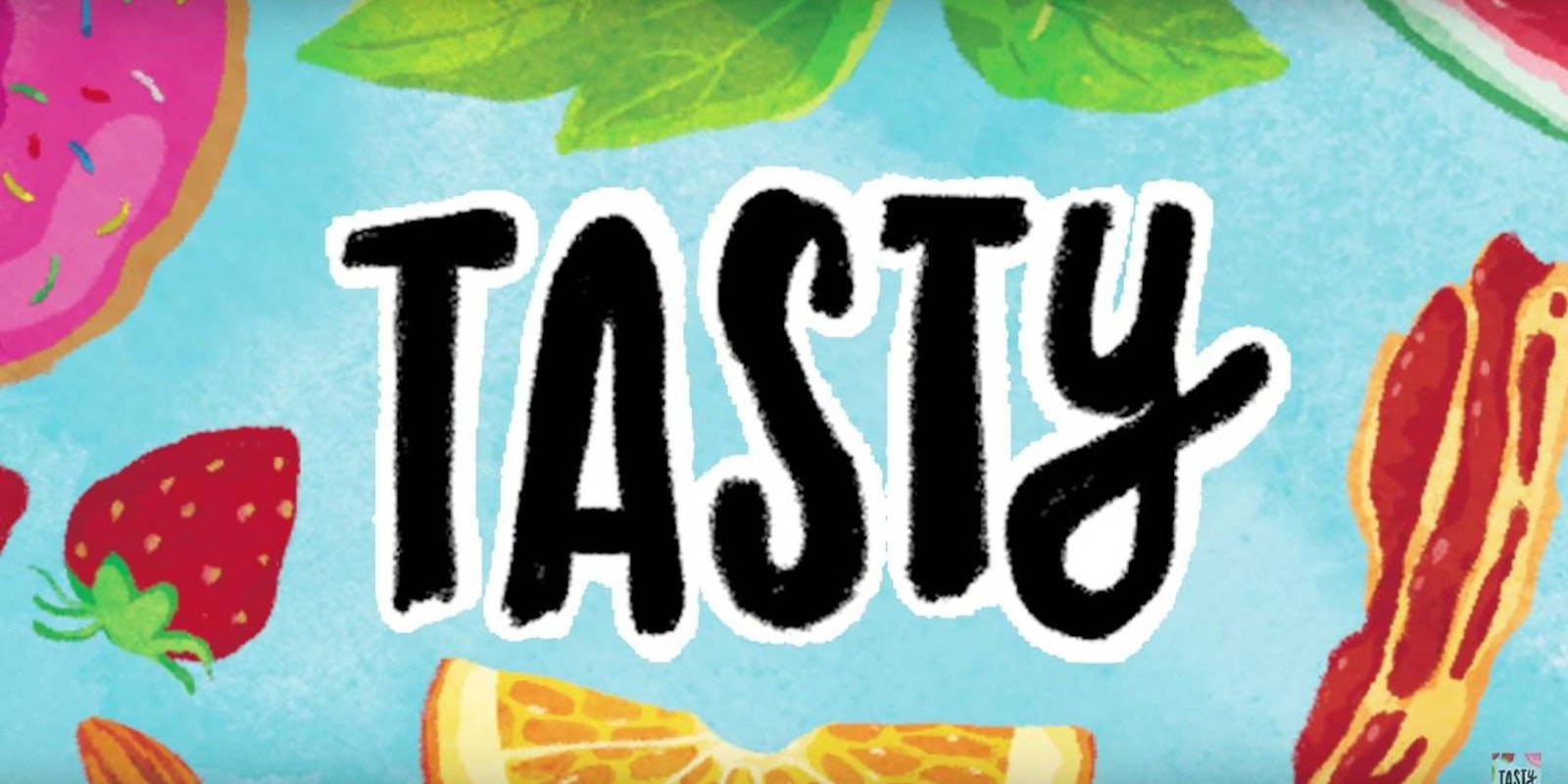Scrolling through Facebook or Instagram, you might pause for a moment to watch a delicious meal come together in less than 60 seconds.
These videos, most notably BuzzFeed’s “Tasty” series, combine Pinterest-level food porn and the fun of watching a cooking show into a short video that works just as well in GIF form. It’s the perfect recipe to inspire you to cook, says Dawn Clifford, a professor and dietician at California State University, Chico.
The trick is to make it look simple and easy, Clifford told the Daily Dot in an email.
“When it comes to putting meals together, the easier the better for many busy Americans,” Clifford said. “The best way to encourage people to cook more at home is to make it look easy and these videos do just that.”
Clifford has studied how watching cooking shows can help people learn about nutrition and cooking. Her research showed that cooking shows, specifically a TV show called “Good Grubbin,’” helped college students living off campus learn about nutrition, though it didn’t necessarily inspire them to cook more for themselves.
But while cooking shows have to be found by most viewers, popular, bite-size “Tasty” videos may just pop up on your social media feed.
And people love to share them. BuzzFeed’s “Tasty” Facebook page boasts nearly 50 million followers. Individual videos garner hundreds of thousands of shares.
Individuals can log a lot of social media milage if they post quick videos of their creations. Instagrammer Big “Just a man with a pan” Tym has almost 30,000 followers and concocts indulgent fast- and junk-food creations that can only be described as the ultimate bachelor food. Examples include battered and deep fried White Castle burgers and hostess snowball french toast.
https://www.instagram.com/p/BAA-WDrnKWV/
There are certainly other, healthier options out there for your food-video appetite. But Clifford said not to sweat the nutrition too much.
“I encourage consumers to not get too hung up on food rules when putting meals together. Nutrition facts and figures often paralyze consumers,” Clifford said. “ If adding salad dressing, butter, and salt will make them more pleasurable, I say go for it!”
But do the videos inspire people to cook? Unfortunately, there are no studies on whether or not this specific type of recipe presentation is any more or less effective. However, it is engaging.
A recent study in the journal Computers in Human Behavior found that students majoring in hospitality were better able to engage with and retain recipes and cooking instructions in video form rather than in print.
So these mini recipe videos not only demonstrate how easy it is to throw together a delicious meal, but they also may be easier to retain than reading a lengthy description of how to create the recipe.
There’s another element to these videos that make them so appealing: food porn. Just as someone may graduate from Playboy to PornHub, perhaps food porn GIFs are a natural progression from the static photos adorning many Pinterest recipe boards. The science of food porn is, however, inconsistent. According to a 2015 article in The Atlantic, studies suggest that looking at high-resolution photos of tantalizing food can stimulate hunger. But other research suggests that if we then eat foods that are similar to the food porn we were just looking at, we might find the taste of that food less satisfying than we normally would.
Some people think food porn represents a “supernormal stimulus” which is the technical term for a sort of hyperbolic expression of a particular trait in an animal, such as color or size. The Atlantic cited an experiment where mother birds favored feeding dummy chicks with beaks painted brighter to the exclusion of their own, living chicks with natural-colored beaks. Why? They just liked the beaks more, it seems. In people, it might explain why we like super-sweet candies and beverages over plain fruits, or why we tend to seek out salty, crispy snacks.
In these short recipe videos, you not only get the pornografied version of the final product, but you get to watch the mouthwatering process. There’s something satisfying about watching someone perfectly julienne a bell pepper in seconds, a souffle rise in the oven, or hot oil transform a frozen stick of cheese and breadcrumbs into a mozzarella stick.
Whether these videos are ultimately eye candy or fertilizer for future food adventures, they definitely demonstrate how easy cooking can be.
“The best way to move towards making more meals at home is to set small, achievable goals for yourself. Start with easy recipes and aim to make just a few recipes a week,” Clifford suggested. “Go to the grocery store with a plan to purchase ingredients for those meals and then build from there. These videos may help you get started.”


